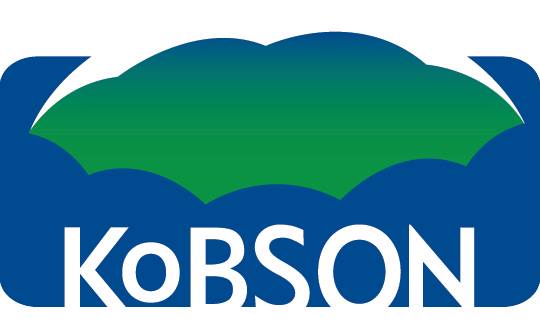DOI: 10.5937/jaes11- 2122
This is an open access article distributed under the CC BY-NC-ND 4.0 terms and conditions.

Volume 11 article 243 pages: 1 - 8
The research subject is the analysis of the possible ways to achieve stakeholder compliance in the brownfield regeneration process. In a narrow sense, the treatment of brownfi eld sites within different planning systems is considered. Each of the selected planning systems is described through the institutional structure as well as the regulative framework. The aim of the paper is to show urban planning mechanisms that are used for the establishment of collaboration between different stakeholders involved in brownfi eld regeneration. In the very beginning, a brief history of spatial development is given. A special emphasis is on the current trends in the brownfi eld regeneration. The central part of the paper deals with the overview of selected examples in terms of brownfield regeneration. It is followed by the overview of the institutional aspect within the planning system in Switzerland and Austria. The determination of the responsible institutions for the brownfi eld regeneration process is of particular importance. Also, it is important to show the basic documents dealing with the above-mentioned topics. However, the focus of research concerns the collaborative procedures to achieve the successful regeneration of brownfi elds. Those results stem from the analysis of the brownfi eld sites examples. Namely, the fi rst example relates to the regeneration of wood-industry complex in the Swiss town of Solothurn, while the second case indicates the regeneration of cable and wire factory in Vienna. The fi nal section of the paper systemizes the experiences from the developed countries which provide a possible formulation of general brownfi eld regeneration model to be applied within different contexts.
Alker, S.,
Joy, V., Roberts, J., and Smith, P., (2000) The defi nition of brownfi eld, Journal
of Environmental Planning and Management, 43(1), 49-69.
CABERNET
(Concerted Action on Brownfield and Economic Regeneration Network), (2009)
Sustainable Brownfi eld Regeneration, http://www.cabernet.org.uk, preuzeto 10.12.2010.
Dixon, T.
and Doak, J., (2005) Actors and Drivers: Who and what makes the brownfield regeneration
process go round? In: Proc., SUBR:IM conference, Sheffi eld, UK,
http://www.subrim.org.uk/publications/subrim-1stconference/1030_1100actorspaper.doc,
preuzeto 25.11.2008.
Dixon, T.,
Raco, M., Catney, P. and Lerner, D. (Eds.), (2008) Sustainable Brownfi eld
Regeneration: Liveable Places from Problem Spaces, Chichester: Wiley.
Doak, J.
and Karadimitriou, N., (2007) (Re)development, complexity and networks: a
framework for research, Urban Studies, 44(2), 1-22.
Ferber, U.
and Grimski, D., (2002) Brownfields and redevelopment of urban areas, Vienna: Austrian
Federal Environment Agency on behalf of CLARINET.
Grams, A.,
(2011) [Personal communication], 4 September.
Mrdjenovic,
T. (2011): Integrative urban design in regeneration – principles for achieving
sustainable places, Journal of Applied Engineering Science, Vol. 9, No. 2, pp.
305-316.
Muggli, R.,
(2008) Spatial planning in Switzerland: a short introduction. In: J. Ryser and T.
Franchini (Eds.), International Manual of Planning Practice (IMPP),
International Society of City and Regional Planners (ISo-CaRP), 304-314.
Pamer,
V.K., (2011) [Personal communication], 6 November.
Prokop, G.,
Jobstmann, H. and Schönbauer, A., (2011) Report on best practices for limiting soil
sealing and mitigating its effects, Luxembourg: European Commission.
RESCUE
(Regeneration of European Sites in Cities and Urban Environments) (2004– III),
(2004) Guidance report for the management of the Brownfi eld Regeneration Projects
(Work Package 6, Deliverable 6.1), http://www.rescue–europe.com, preuzeto 13.12.2010.
Scholl, B.
(Ed.), (2008) Spatial planning and development in Switzerland – observations and
suggestions from the international group of experts, Zurich: ETH Zurich,
Institute for Spatial and Landscape Development.
Schremmer,
C., (2010) Austrian Spatial Development Strategy in a European Perspective. In:
Proc., Symposium ’Spatial Planning in the Danube Region: A Comparison of Serbia
and Austria’, Vienna, Austria.
Stanilov,
K. (Ed.), (2007) The Post-Socialist City: Urban Form and Space Transformations in
Central and Eastern Europe after Socialism, Dordrecht: Springer.
Staub, B.,
(2011) [Personal communication], 3 December.
Swiss Federal Council, (2008) Sustainable
Development Strategy: Guidelines and Action Plan 2008–2011, Bern: Swiss Federal
Council.







